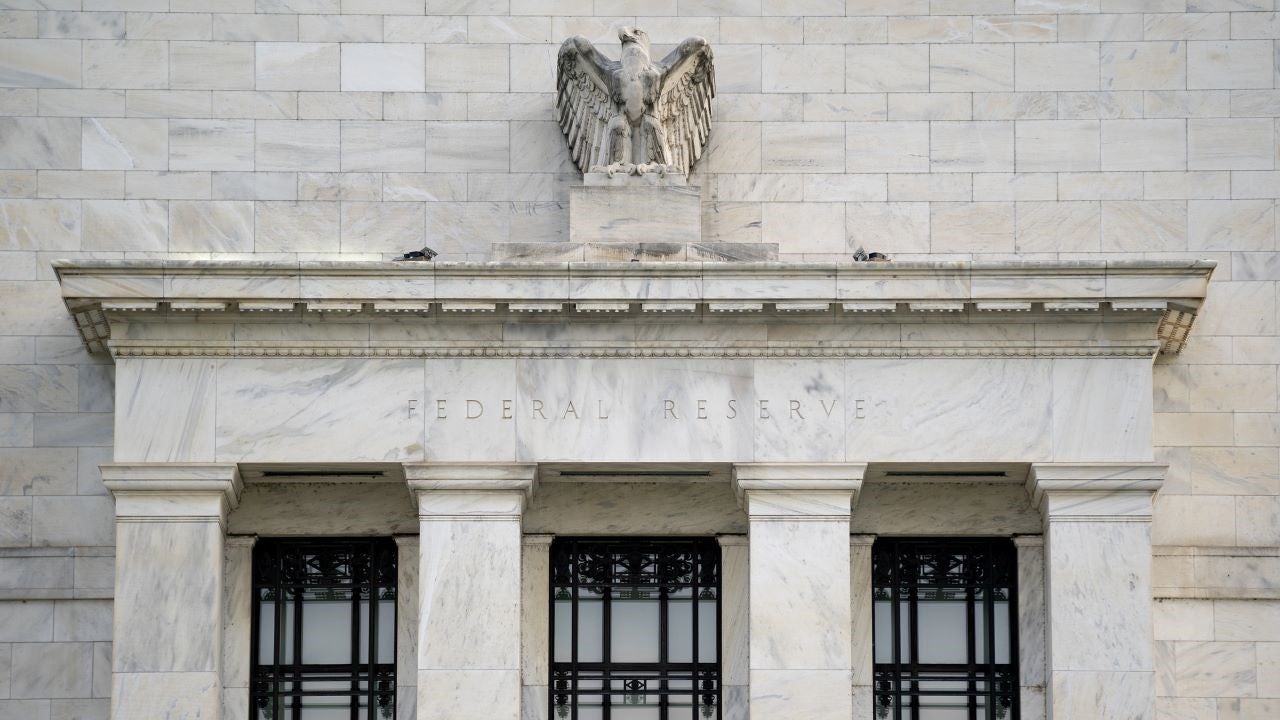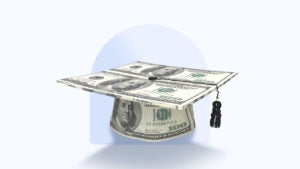How the Fed rate changes impact student loan interest rates

Key takeaways
- Interest rates on federal student loans are always fixed. These rates are set on July 1 each year for loans disbursed from July 1 to June 30 of the following year.
- Borrowers with existing federal student loans will not see any changes when the Fed lowers interest rates.
- Borrowers with variable-rate student loans from private lenders may see their interest rate change when the federal funds rate changes.
The March 19, 2025, Federal Reserve meeting resulted in no changes, so the rate remains at the target range of 4.25 percent to 4.5 percent. This interest rate is only a benchmark and does not dictate lenders’ rates, meaning that borrowing costs can still be high.
If you’re one of the millions of Americans with student loans, you may wonder how the Fed rate changes affect your payments. Federal student loans come with fixed interest rates, meaning they don’t change over the life of the loan. Even if the Federal Reserve raises or lowers interest rates, your payments and how much you pay on interest will remain unchanged.
That said, borrowers who have private student loans with variable interest rates may see changes when the Fed raises or lowers rates. New borrowers will likely see slightly lower rates across the board, although they may still be able to get favorable rates depending on their finances.
How do Fed rate changes affect student loan interest?
All student loans, both federal and private, accumulate interest at some point. The way the interest is calculated depends on the type of loan and rate you have, as well as who your lender is.
While the federal funds rate isn’t the exact interest rate you’re charged for taking out credit, it impacts lenders’ borrowing costs, and these costs get passed onto consumers. In other words, if the Fed raises interest rates, the average interest rate on loans will also increase over time. Likewise, if the Fed cuts interest rates, lenders are likelier to gradually lower their interest rates.
How the Fed’s decisions affect federal student loans
When it comes to federal student loans, interest rates are determined by Congress each year. This interest rate is valid from July 1 of the current year until June 30 of the following year and is always fixed.
With federal student loans, everyone — regardless of their credit score and income — gets the same interest rate. However, your exact rate will depend on whether you’re an undergraduate, graduate or professional student or if you’re a parent of a student taking out a PLUS loan.
If you already have federal student loans, decisions made by the Federal Reserve won’t affect you at all. However, if you’re taking out a new federal student loan this year after the Fed raised interest rates, your loans will have a higher interest rate than those you took out last year.
For example, Direct Unsubsidized loans had a fixed interest rate of 5.50 percent for undergraduate students during the 2023-24 academic year. Now, they have a fixed interest of 6.53 percent for the 2024-25 academic year.
How the Fed’s decisions affect private student loans
Private student loan lenders use the London Interbank Offered Rate (LIBOR) on top of an average market rate to determine their interest rates. With private loans, your exact rate will depend on factors such as your credit score and income, and you can choose to have a fixed or a variable interest rate.
If you have a private student loan with a variable interest rate, you’ll feel the Fed rate changes the most. When the Fed raises or cuts borrowing costs, your interest rates will likely respond over time. This, in turn, can result in more or less interest paid over the life of the loan.
If you have private student loans with a fixed interest rate, the Fed rate changes won’t affect your existing loans. If you’re taking out a new private loan — whether fixed or variable — you may see higher or lower rates based on Fed shifts.
How to respond to Fed rate changes
In an environment with fluctuating interest rates, your next best steps can vary from doing nothing to refinancing your loans. Here are some tips that can guide you based on the type of student loans you have:
- If you have a federal student loan: Rate changes won’t impact your loan payment or the interest you pay. It’s best to stick with your current loans, especially because these come with benefits that private loans don’t offer.
- If you have a fixed-rate private student loan: If you have private student loans with a fixed interest rate, Fed changes won’t affect you. The fixed interest rate is locked in for the duration of your repayment period, though if rates drop you can potentially refinance into a new loan with a lower fixed rate.
- If you have a variable-rate private student loan: If you have a private student loan with a variable interest rate, you can see your monthly payment and monthly interest charges change based on market conditions. If the rate change raises your monthly payment, shop around to get the best refinance rate available based on your credit score and other factors.
When to refinance your student loans
Regardless of whether you have federal or private student loans, you have the option to refinance your student loans to get a better deal. Refinancing is taking out a new loan with a new — usually better — interest rate and repayment terms, paying off your old loans and then making one payment to your new loan.
You should refinance your student loans if:
- You have a solid credit score: Since you’re taking out a loan with a private lender, your credit score and credit history will determine your new interest rate. If you don’t have an excellent or even good credit score, your interest rate will be higher than that of someone with a better score.
- You have private student loans: Federal student loans have several protections, like deferment, forbearance and income-driven repayment plans. Those go away when you refinance. If you have private student loans already, you don’t stand to lose these benefits.
- You’ll get a lower interest rate: If you have a high interest rate — whether it’s fixed or variable — a good chunk of your monthly payments might be going toward interest instead of your principal balance. If you can secure a lower interest rate, you’ll get a lower monthly payment. If you’re struggling to make payments now, this might be your biggest determination for refinancing.
Next steps
The Fed’s decisions won’t necessarily impact your student loans. That said, if you have a variable student loan rate, or if you’re hoping to take out a new student loan, it’s worth keeping an eye on how the federal funds rate changes. Timing your student loan correctly could help you save money on interest over time.
You may also like

How changes in interest rate affect debt

How the Federal Reserve impacts personal loans




